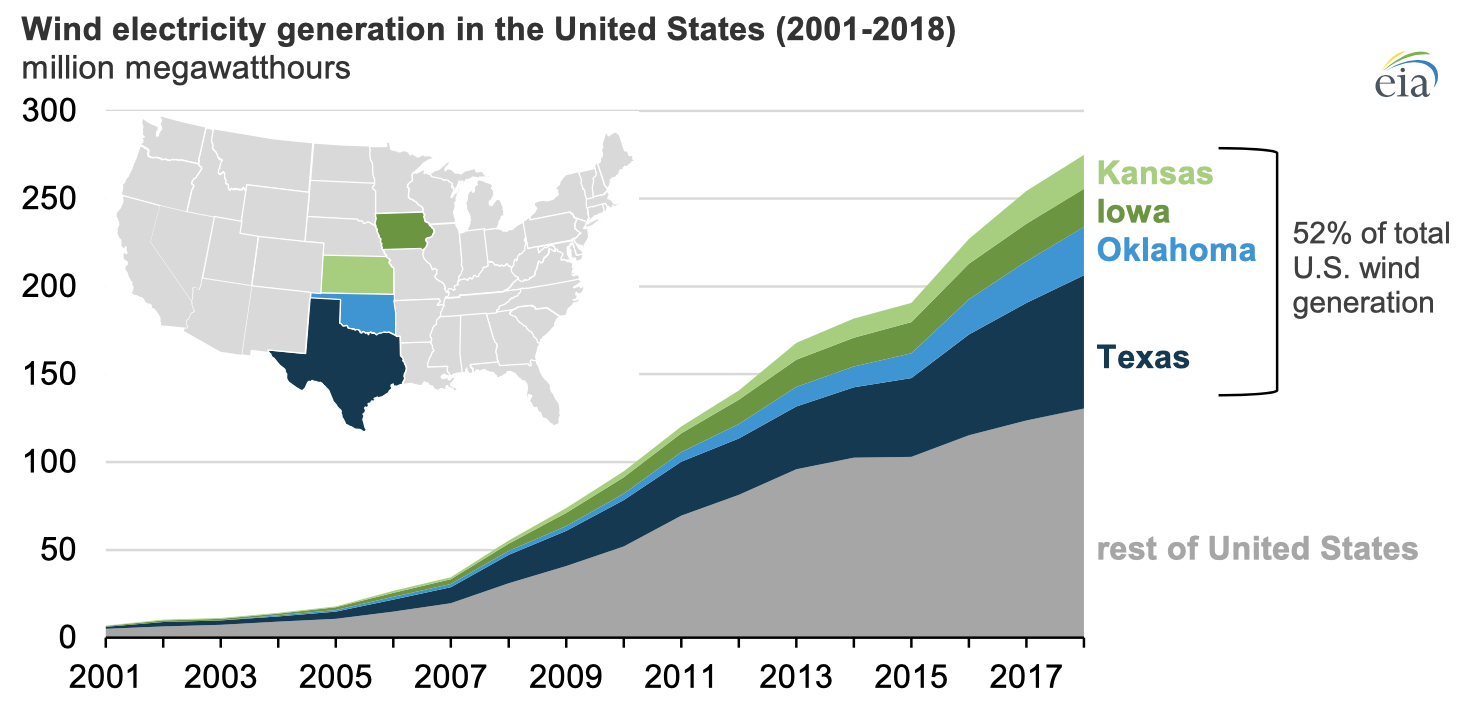In the United States, producers generated 275 million megawatthours (MWh) of electricity from wind power in 2018. Of that, more than half came from just four states: Texas, Oklahoma, Iowa, and Kansas. Five other states—California, Illinois, Minnesota, North Dakota, and Colorado—provided another 20% of total wind generation in the country.

Texas has accounted for over 25% of U.S. wind electricity generation in each of the past three years. Most wind generating capacity in Texas is located in the rural northern and western areas of the state. The Public Utility Commission of Texas authorized a series of transmission expansion projects in 2008 that connected wind generating capacity with population centers in the southern and eastern areas of the state. In 2018, wind provided 16% of total electricity generation in Texas, behind natural gas (50%) and coal (23%).
Iowa wind generation has more than doubled since 2011. Over that period, coal-fired generation decreased from a peak of more than 40 million MWh to less than 29 million MWh. Wind provided 34% of total electricity generation in Iowa in 2018, behind natural gas (44%).
Kansas became the fourth-largest wind generating state in 2016. Wind turbines accounted for 36% of the electricity generated in Kansas in 2018, a larger share than any other state, and behind only natural gas’s share of the total at 39%.
These states have benefited from having some of the best wind resources in the United States along with relatively low wind farm construction costs. Also, each of these states has either mandatory renewable portfolio standards (RPS), as in Texas and Iowa, or voluntary goals, as in Oklahoma and Kansas, that have encouraged the installation of wind capacity. Each of these states has seen significant growth in wind capacity even after meeting RPS targets or voluntary goals.
Principal contributor: Allen McFarland






